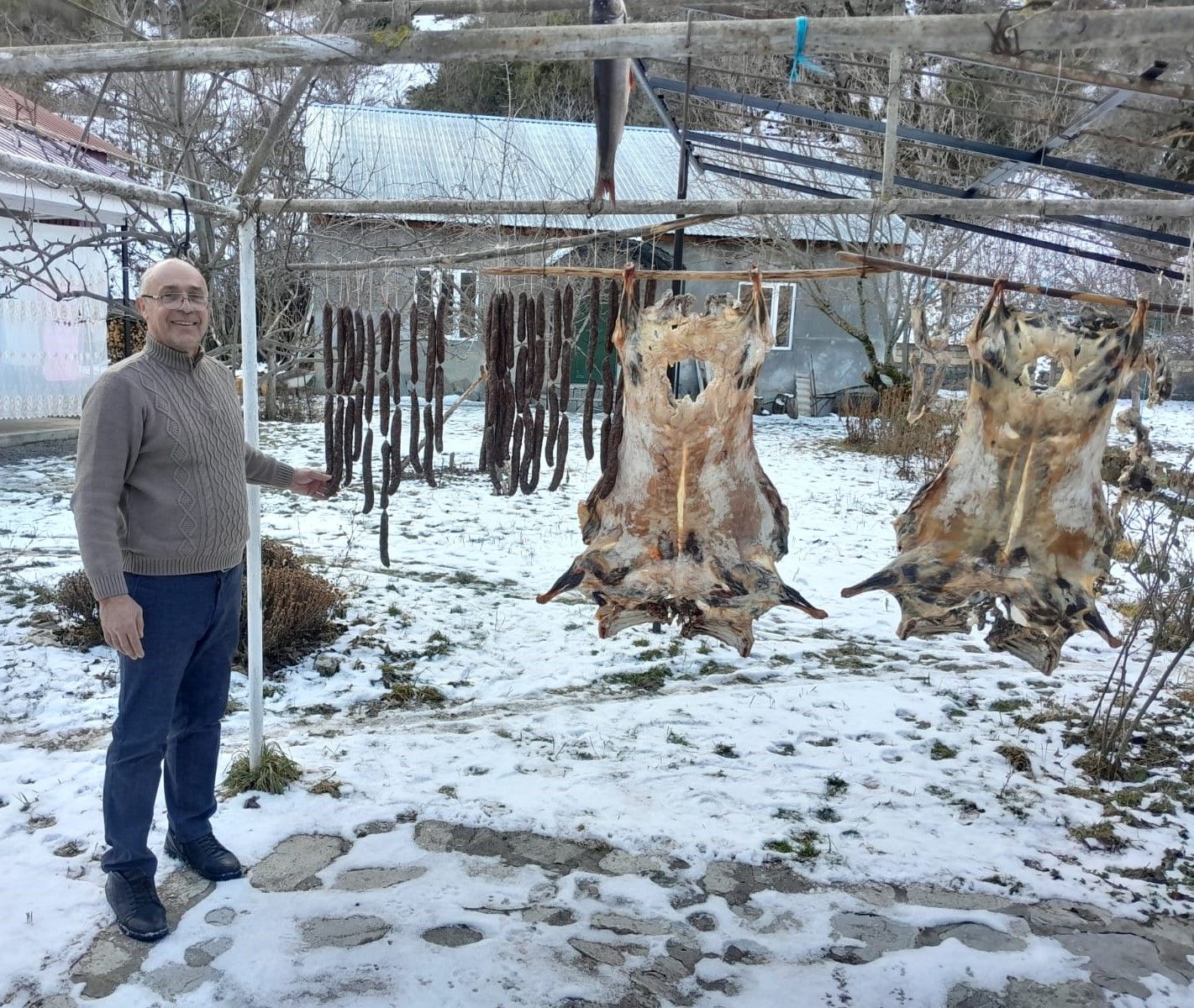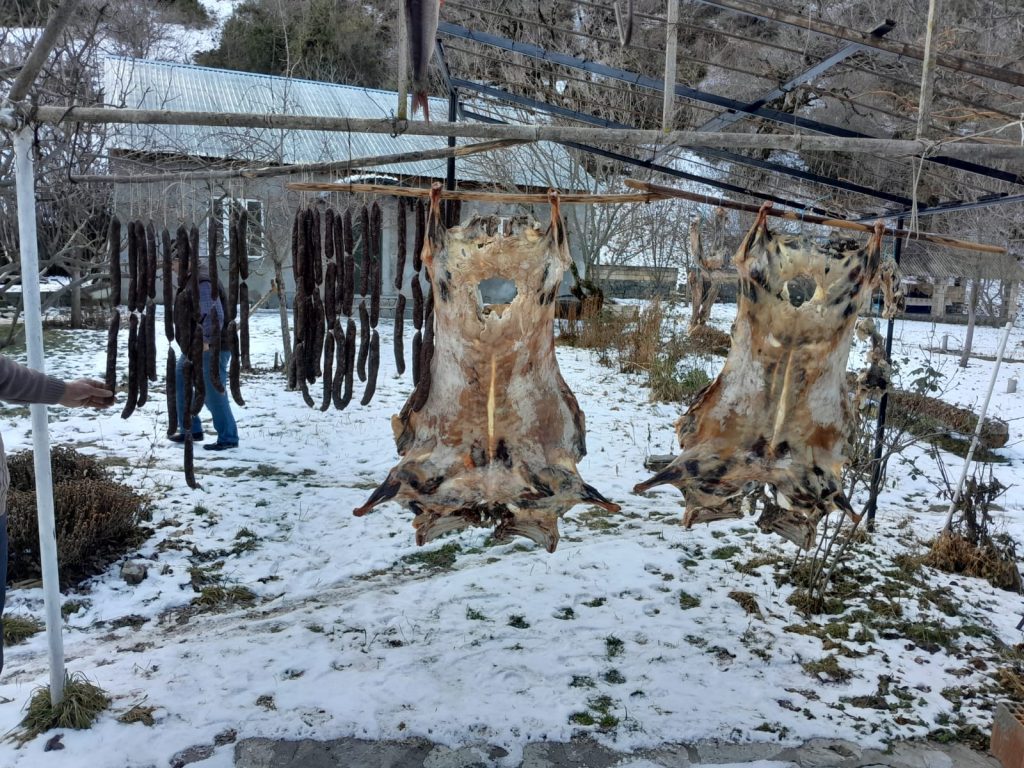
A crown dish for the chosen ones to taste
A new chapter of a family business tracing 400 years of existence
Bayram Mammadov, a resident of Ilisu rural settlement of Gakh, an administrative district in the north-western corner of Azerbaijan, speaks about the past of his family business and vision for its future, which seems to be as distinct as the snowflakes falling down during our interview in Baku, on a surprisingly cold and snowy winter day. Bayram is the leader of the Qaxac ət team and winner of Yurdumun ləzzəti, a local food festival in Azerbaijan. He is also a beneficiary of the EU-funded, FAO-implemented project Promoting local food production and agrı-business owners through advisory services, the creation of new value chain models, and agrı-tourism development.
-Baku, the capital of Azerbaijan, is not my favorite destination. Nevertheless, I visit it since I have to do so to see my undergraduate kids or attend the wedding parties of my friends, my nearest and dearest. There could be other occasions, like an invitation to join in a food festival organised by the European Union. Although I spend just a day or two in Baku, I keep thinking of my hometown, Ilisu, the ancestral land I have attached myself to. It is snowing in Baku, but it isn’t the snow we experience in Gakh.
My homeland has a different climate. The evolution of qaxac ət [gʌh’æʤ æt], salt-cured meat, is specific to both the weather and life patterns in Ilisu. The history of qaxac ət dates back to ancient times, perhaps before the dawn broke into the Anno Domini world. The Bajaroghullaris, my kinsfolk, are the artisans of qaxac ət, an inherent feature of everyday life and, generally speaking, the mode of life of ancient Turkic peoples. What food do you think could cater better for horsemen embarking on a military campaign to distant lands to conquer the world?
If you watch our everyday domestic life, you will find out how everything logically complements each other. In October, our countrymen harrow land to sow a layer of seeds, the final sowing of the year, according to us. Therefore, October is called ekim [the word meaning sowing] in the modern Turkish language. The following month – November – is kasım. However, I think that month should be called kəsim, originating from kəsmək [the word meaning cut or slaughter], since we slaughter domesticated ruminant animals to make preparations for winter. In different parts of Azerbaijan, preparations for winter go in line with the corresponding climatic conditions. In Ilisu, the animals are slaughtered in November, just before black frosts, an ideal time to start curing meat with salt.

Between Ilisu and Saribash, a neighbouring village at a higher altitude, lies a billowy grazeland, and well-fed animals coming from rich pastures down to Ilisu in autumn are selected for qaxac ət. Salt-cured ram, ewe, or doe meat have different tastes, but each is a flavor of the mouth since qaxac ət contains three ingredients only, precisely, meat, salt, and seeds of the herb known as fenugreek.
Upon butchering, the carcass should freeze for a day, then gets ripped open, salted, and kept in a special cask for a few days before being hung to dry. Our elders kept saying it was severe cold at night and a frosty sun during the daytime, which made qaxac dry up.
Qaxac ət was a particular crown dish or a dish for sultans in Ilisu that used to be the seat of rulers of the local principality in the 16th to the 19th centuries. Qaxac ət can be cut up to prepare various dishes throughout the year. The brisket is fit for xəngəl (hingel or khinkal), a local variety of dumplings made of corn flour dough. Ribs are good for sürhü, another local farinaceous dish. Fat meat is preserved for sürhüllü, a highly calorific dumpling soup – a local delicacy and the culinary jewel of Ilisu. You can taste sürhüllü even in August if invited to our wedding parties. That’s not the end of our gastronomic riches. Qaxac ət mixed with small-size lablab beans is also served with pilav, a popular rice dish.
Meanwhile, bağırsaq doldurması [intestines stuffed with salty meat flavored with onions and alpine herbs] is another cherry on the top of the cake. Frankly, this is a Turkic sausage – it can remain unspoiled for up to two years if stored in dry, cool, well-ventilated conditions. Bağırsaq doldurması is a precious gift mothers send to their kids living abroad or doing their military service in different parts of Azerbaijan. To prepare bağırsaq doldurması, we slit off chunky portions of beef, mutton, or chevon, then add onions and alpine herbs and salt the output afterwards. We call that stuffing içnovur. Then içnovur is stuffed into the large gut of ram or cattle to dry up.
Qaxac ət has been included in the Ark of Taste, an international catalog of heritage food, following the implementation of the EU-funded, Slow Food coordinated COVCHEG (Community-based Value Chain Enhancement in the Greater Caucasus Mountains Area) project. Also, the EU-funded project Development of sustainable and inclusive agri-food systems in the north-western regions of Azerbaijan turned out to be a tremendous support for us to expand our business. Subsequently, we became passionate about building Qaxac Ət House and selling our products to Europe. I do believe that this dream will not be long in coming true, making qaxac ət – a heritage food as old as Ilisu itself – an incredible dish to become established in different cuisines.